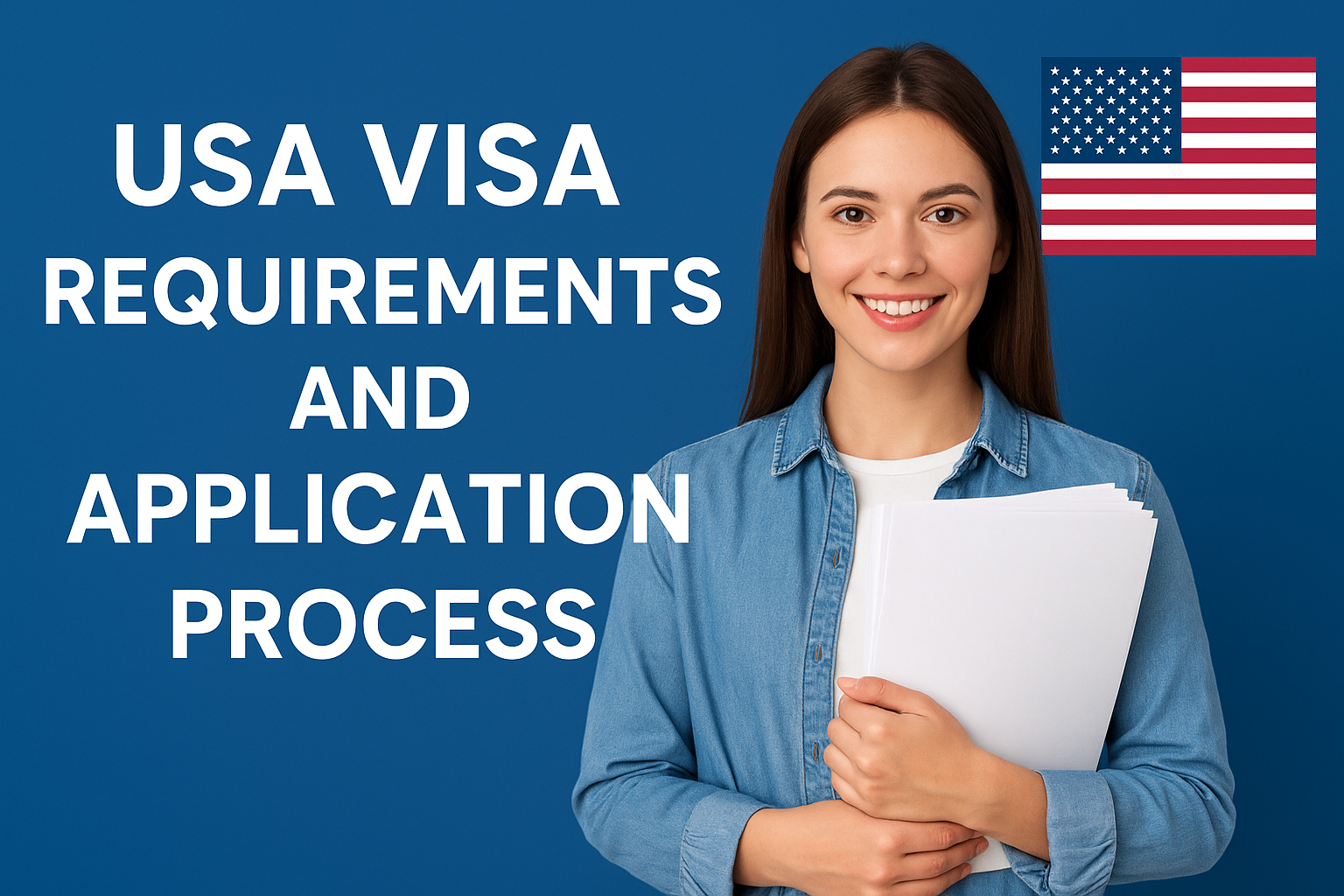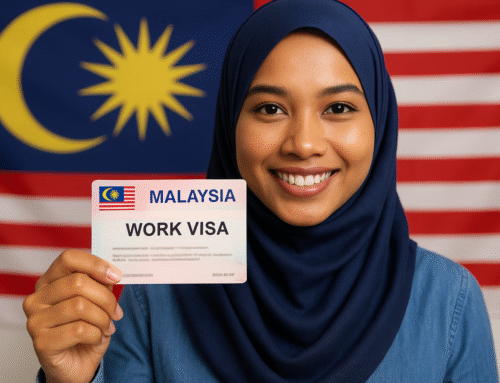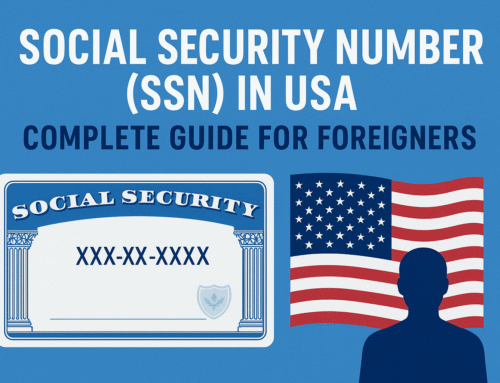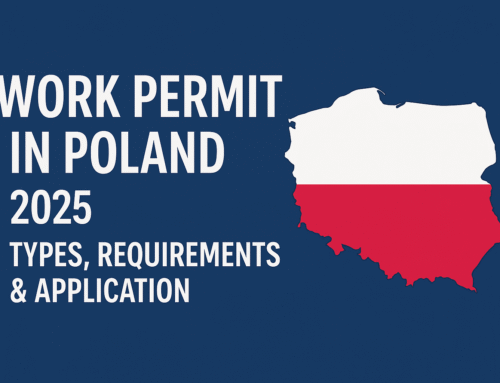The United States of America is one of the most popular destinations in the world for tourism, education, employment, and permanent residency. Every year, millions of people apply for a USA visa to fulfill their dream of visiting or living in America. However, the process of obtaining a visa can often seem complicated because of different visa categories, eligibility requirements, and documentation.
This comprehensive guide will help you understand everything you need to know about USA visas in 2025—including types of visas, requirements, the application process, fees, and tips for increasing your chances of approval.
What is a USA Visa?
A USA visa is an official document issued by the U.S. government that allows foreign nationals to enter the country legally for a specific purpose, such as tourism, study, work, or immigration. Depending on your purpose of travel, you may need a non-immigrant visa (temporary stay) or an immigrant visa (permanent residence).
Types of USA Visas
The U.S. visa system is divided into several categories. Here are the most common ones:
1. Non-Immigrant Visas (Temporary Stay)
These visas are issued to individuals who wish to visit the U.S. for a short period. Popular non-immigrant visas include:
- B1 Visa (Business Visa): For individuals visiting the U.S. for business meetings, conferences, or negotiations.
- B2 Visa (Tourist Visa): For travelers visiting for tourism, medical treatment, or family visits.
- F1 Visa (Student Visa): For international students pursuing education in U.S. schools, colleges, or universities.
- J1 Visa (Exchange Visitor Visa): For exchange programs, research, or cultural exchange activities.
- H1B Visa (Work Visa): For professionals in specialized fields, often sponsored by U.S. employers.
- L1 Visa: For employees of international companies being transferred to a U.S. branch.
2. Immigrant Visas (Permanent Residence)
These visas are for individuals who want to live and work permanently in the U.S. Examples include:
- Family-Based Visa: For spouses, parents, and children of U.S. citizens or permanent residents.
- Employment-Based Visa: For skilled professionals, investors, and workers sponsored by U.S. employers.
- Diversity Visa (Green Card Lottery): A special program that allows individuals from underrepresented countries to immigrate to the U.S.
- Fiancé(e) Visa (K-1): For foreign nationals engaged to U.S. citizens, allowing them to marry and apply for a Green Card.
USA Visa Requirements
To successfully apply for a USA visa, you must meet certain requirements. Although specific requirements vary by visa type, here are the general documents needed:
- Valid Passport (must be valid for at least six months beyond your stay).
- Completed DS-160 Form (for non-immigrant visas).
- Recent Passport-Sized Photographs meeting U.S. visa photo standards.
- Visa Application Fee Receipt.
- Proof of Purpose of Visit (invitation letter, job offer, admission letter, etc.).
- Financial Proof (bank statements, tax documents, sponsorship letters).
- Ties to Home Country (employment, property, family proof to ensure you will return).
- Medical and Police Clearance Certificates (for some categories).
How to Apply for a USA Visa
Applying for a U.S. visa involves several steps. Here is the standard process:
Step 1: Determine the Type of Visa
Choose the visa that matches your purpose of travel—tourism, work, study, or immigration.
Step 2: Complete the DS-160 Form
Fill out the DS-160 form online for non-immigrant visas or DS-260 for immigrant visas. Make sure all details are accurate.
Step 3: Pay the Visa Fee
Each visa has a different fee structure. The fee is usually non-refundable and must be paid before scheduling your interview.
Step 4: Schedule Your Visa Interview
Book an appointment at the nearest U.S. Embassy or Consulate in your country. Slots fill up quickly, so it’s best to schedule early.
Step 5: Prepare Required Documents
Gather all necessary documents, including your passport, DS-160 confirmation, fee receipt, and supporting documents.
Step 6: Attend the Interview
Attend your visa interview on time. Be prepared to answer questions honestly about your purpose of visit, financial stability, and ties to your home country.
Step 7: Wait for Processing
Visa processing time can vary depending on the visa type and embassy workload. Some visas are approved immediately, while others may require additional background checks.
USA Visa Fees
The cost of a U.S. visa depends on the type:
- B1/B2 Visa: $185
- F1 Student Visa: $185
- H1B Work Visa: $205
- L1 Visa: $205
- K-1 Fiancé(e) Visa: $265
- Immigrant Visa Fees: Around $325–$345 (depending on category)
Note: Fees may change, so always check the latest updates on the official U.S. Embassy website before applying.
Processing Time for USA Visa
- Tourist/Business Visas (B1/B2): 3–5 weeks
- Student Visas (F1/J1): 3–6 weeks
- Work Visas (H1B/L1): 2–6 months
- Immigrant Visas: 6 months to over a year (depending on category)
Common Reasons for Visa Rejection
Many applications get rejected due to common mistakes. Here are some reasons:
- Incomplete or incorrect DS-160 form.
- Lack of financial stability or proof of funds.
- Weak ties to home country, raising suspicion of illegal stay.
- Submitting fake or inconsistent documents.
- Previous immigration violations.
Tips to Increase Your Chances of Visa Approval
- Be Honest: Provide accurate information and documents.
- Show Financial Proof: Demonstrate that you can cover your expenses.
- Strong Ties to Home Country: Show proof of job, business, family, or property ownership.
- Prepare for the Interview: Practice common questions like “Why do you want to visit the U.S.?”
- Apply Early: Visa slots and processing times may take months, so plan ahead.
Latest Updates on USA Visa in 2025
- Increased Appointment Slots: Due to high demand, more interview slots are being opened at embassies worldwide.
- Digital Visa Processing: Many embassies are now shifting to faster, partially online application processes.
- Work Visa Quotas: H1B and other work visa quotas remain highly competitive, so early application is recommended.
- Student Visa Demand Rising: U.S. universities are reporting record-high numbers of international applicants.
Conclusion
Obtaining a USA visa is a detailed but achievable process if you prepare properly and meet all requirements. Whether you are planning to study, work, travel, or live in the U.S., knowing the right visa category and following the application steps carefully will help increase your chances of success.
America offers endless opportunities—from world-class education and career growth to cultural exchange and tourism. If you are planning to apply for a U.S. visa in 2025, start early, prepare your documents carefully, and approach the process with confidence.
Read Also:






Leave A Comment